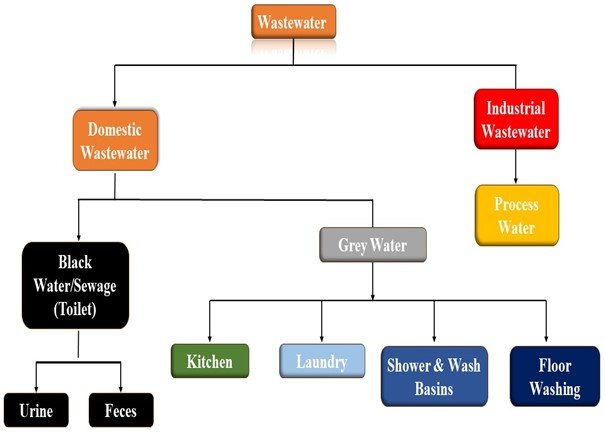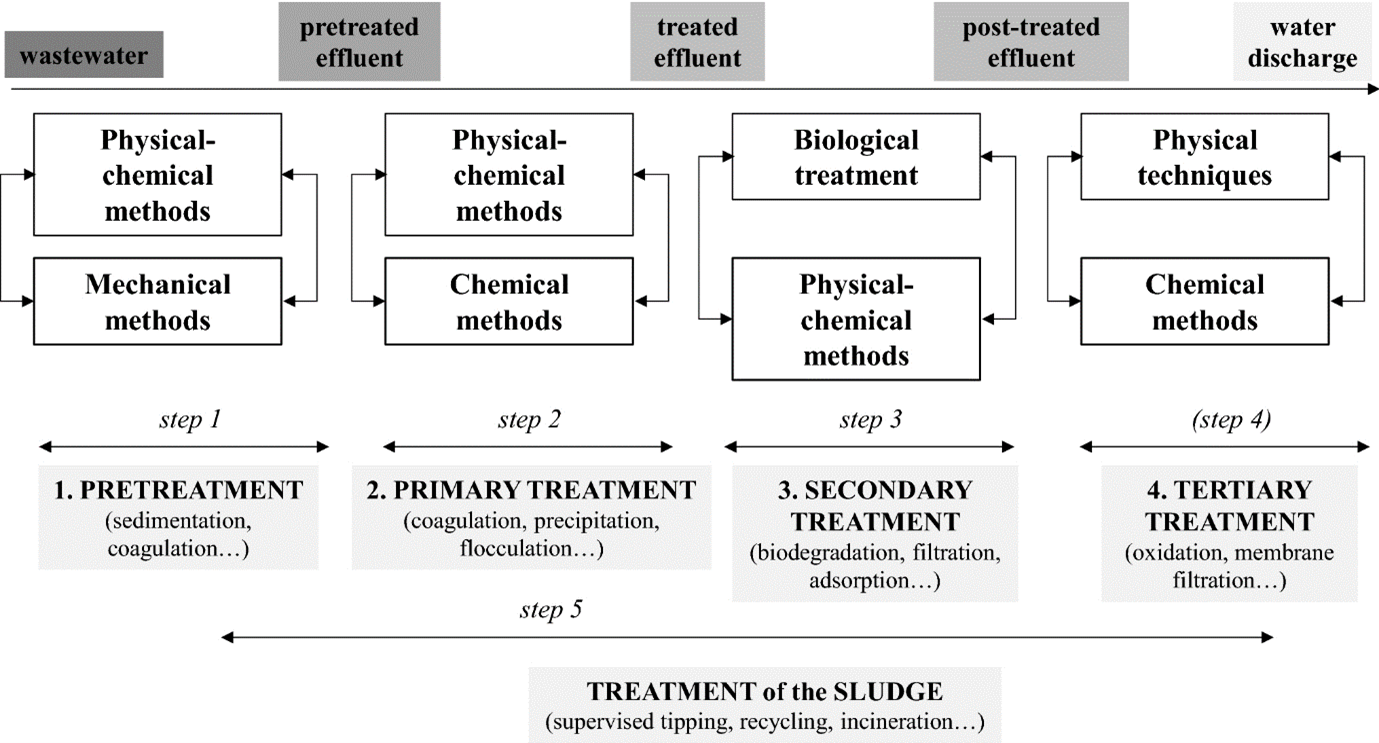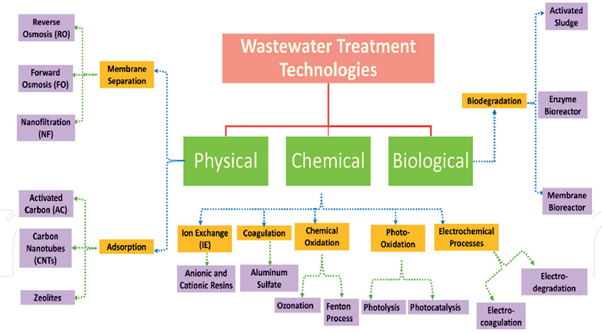
Wastewater Overview

Water is the sign of life. A global survey shows that approximately 70% of the earth’s surface is covered by water in the form of oceans, seas, rivers, lakes, etc. Despite being abundant, water is becoming highly scarce due to the growing disparity between freshwater supply and usage. The imbalance between the supply and demand of clean water resources is one of the biggest challenges these days. Water demand is increasing due to the following reasons:
- Migration and population explosion in areas already facing drought conditions
- High rate of industrial expansion and per capita rising demand for water.
- Shift in weather patterns due to the prevailing conditions of climate change.
Water quality is highly threatened due to the presence of microorganisms (i.e., pathogens) and various anthropogenic chemicals, resulting in a subsequent rise of waste products in water bodies due to human activities and industrialization. Such water is characterized as wastewater.
2. Wastewater and its types
Wastewater is basically water produced after its usage. It may include municipal wastewater, industrial wastewater, etc. There are several sources of wastewater production, such as industrial waste, mining activities, sewage, pesticides, chemical fertilizers, the energy sector, thermal activities, and unchecked urban developments. Technically, wastewater is everything that goes down the drain or toilet from your house or place of employment, as well as public areas. It is 99.9% water and 0.1 percent waste.
On the basis of its production, wastewater is further divided into the following classes:
- Grey Water: Produces from non-toilet, i.e., showers, baths, hand basins, kitchens, and laundry.
- Black Water is produced from toilets (i.e., human feces, urine, etc.).
- Industrial wastewater: Wastewater generated during the production of commercial products.
- Sewage: A combination of industrial waste, grey water, and black water.
 3. Wastewater Treatment
3. Wastewater Treatment
The wastewater treatment process entails removing impurities (such as chemical substances, heavy metals, sewage, etc.) from wastewater and converting it into effluent that can be further treated and returned/disposed of into the water body.
According to the United States Geological Survey (USGS), improper wastewater treatment can have a harmful influence on both the environment and human health. Fish and mammal populations will suffer, oxygen levels will drop, beaches will close, and there will be various limits on recreational water use, to name a few effects. Hence, the primary objective of wastewater treatment is to minimize as many suspended particles as possible before discharging effluents into the environment.
In one crucial sense, drinking water sources (often rivers, lakes, or reservoirs) and wastewater are very different from one another: When compared to effluent from industrial-type activities, most sources of drinking water have relatively low contamination levels. However, their composition, which in turn depends on their industrial origin, determines their toxicity. The issues that arise during wastewater treatment are generally highly complicated because the effluent contains different sorts of pollutants depending on their origin. Furthermore, there are various effluent kinds to treat, and each has unique properties that necessitate using a separate set of treatment procedures.
4. Processes of Wastewater Treatment
The wastewater treatment is generally carried out in five major steps, including;
- Preliminary Treatment (also known as Pre-treatment)
- Primary Treatment (Physiological and Chemical processes)
- Secondary Treatment or purification (Chemical and Biological)
- Tertiary or Final Treatment (Physical or Chemical)
- Treatment of Sludge (Recycling, incineration)
 4.1. Preliminary Treatment
4.1. Preliminary Treatment
Preliminary treatment is performed to prepare wastewater for the rest of the stages. During this process, heavy objects are removed from wastewater by using grit removal, screening, and pumping.
4.2. Primary Treatment
The key objective of primary treatment is to eliminate or minimize Biological Oxygen Demand (BOD) and Total Suspended Solids (TSS) from wastewater. Primary treatment is performed to settle material by gravity and remove floating objects.
4.3. Secondary Treatment
After primary treatment, wastewater becomes ready to undergo secondary treatment. Secondary treatment is done to reduce organic objects from wastewater. During this stage, microorganisms consume and reduce waste through biological processes.
4.4. Tertiary Treatment
Tertiary treatment processes remove chemicals that cannot be treated with the help of secondary treatment processes, such as nitrogen and phosphorus. The process can be further carried out in chemical-based, membrane, biological, and advanced oxidation technologies. During this step, approximately 99% of pollutants are removed, and water is converted to safe quality for usage for specific purposes.
4.5. Sludge Treatment
In the final stage, sludge produced from wastewater treatment is thickened and dewatered. Various techniques, such as aerobic digestion, anaerobic digestion, and composting, are used to treat sludge.
5. What are Wastewater Treatment Technologies?
Wastewater treatment technologies are eco-friendly techniques that are used to minimize contaminants in water streams, hence helping to protect the ecosystem. The technologies facilitate the recycling of unused products and also manage residual wastes in more biologically acceptable manners. Scientists are seeking low-cost and appropriate solutions to treat and reuse wastewater because it is a significant issue. Water source reduction, wastewater treatment, and recycling are the three purposes for which water treatment technologies are used.
 5.1. Limitations
5.1. Limitations
Despite the advancement of numerous technologies for water treatment and reclamation, it still needs to be improved to treat and recycle water quickly, cheaply, and effectively enough for commercial use. Here, another point of consideration is that it’s important to consider how to manage the sludge that results from removing contaminants. Understanding the technology’s construction and operating costs, as well as the maintenance and management of eliminated pollutants, is part of the systematic approach to water treatment and recycling techniques.
6. Conclusion
During rising concerns of water scarcity and water pollution, it is high time to take initiatives to treat wastewater. Wastewater generation and treatment have become a major concern in the twenty-first century as a result of increased urbanization and industry. Statistics show that the production of wastewater is directly proportional to population explosion. Hence, nations must shift their focus on wastewater treatment through conventional and advanced treatment technologies.